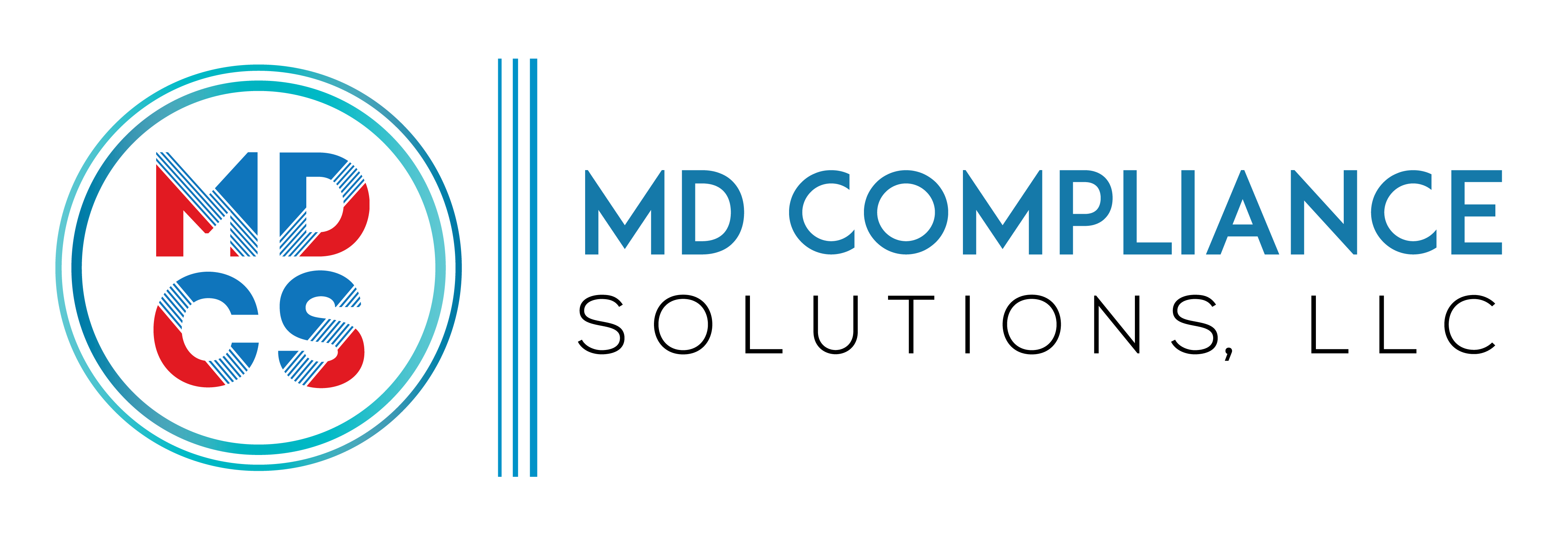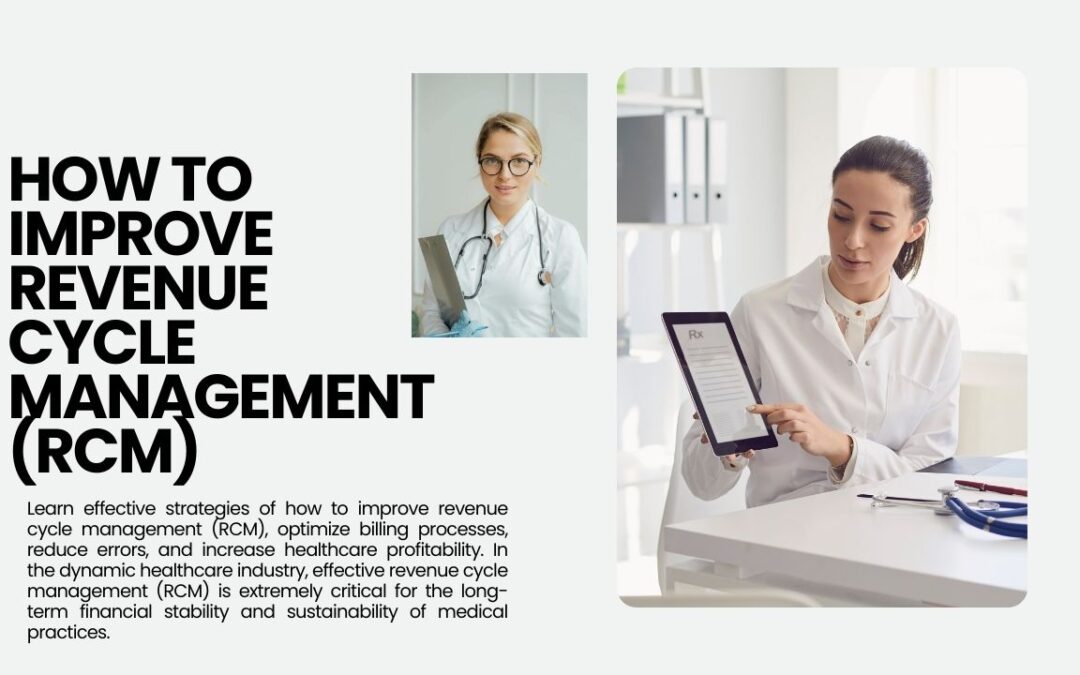Table of Contents
Learn effective strategies of how to improve revenue cycle management (RCM), optimize billing processes, reduce errors, and increase healthcare profitability. In the dynamic healthcare industry, effective revenue cycle management (RCM) is extremely critical for the long-term financial stability and sustainability of medical practices. Efficient RCM can significantly impact monetary performance by streamlining invoicing processes and cutting down the administrative tasks.
At its core, revenue cycle management incorporates every facet of a patient account, from scheduling visits to getting the final payment. There are several stages involved, like patient registration, insurance verification, charge capture, filing claims, posting payments, and handling rejections. Remember every step is vital to ensuring that healthcare providers are paid for services they offer. In this guide, we will explore the sturdiness of RCM and strategies to increase overall operational efficiency and revenue streams.
Components of RCM
Precise patient registration, and the initial phase of the revenue cycle, are necessary to accurately record the insurance and demographic data. Verifying insurance coverage helps prevent claim denials and ensures that patients understand their financial responsibilities. Proper documentation of services delivered enables correct billing and reduces revenue leakage. Clean claims must be submitted on time to avoid payment delays and expedite reimbursement. Efficient payment and adjustment posting allows for more accurate accounting and financial reporting. Proactive detection and resolution of claim denials are critical for increasing revenue recovery and reducing write-offs.
Common Challenges in Revenue Cycle Management
Notwithstanding its impressiveness, revenue cycle management (RCM) presents numerous problems to healthcare companies. The complexities of medical billing codes and insurance policies frequently result in errors and claim denials. Constant changes in healthcare rules and billing standards involve constant staff training and compliance activities. Outdated or disparate systems impede efficient data interchange and workflow automation. Rising deductibles and payments create additional financial stress on patients, necessitating intensified collection efforts. Leveraging data analytics supports identifying trends and inefficiencies, while consistent audits can catch and correct issues early.
Strategies for Improvements:
Moreover, to overcome these challenges and optimize revenue cycle management, healthcare providers can implement the following strategies:
- The patient registration and insurance verification processes should be streamlined to decrease claim denials and avoid billing errors. Using computerized eligibility verification technologies and implementing clear financial policies can help reduce payment delays and promote transparency.
- Investing in dependable RCM software can improve process efficiency, reduce manual error, and improve billing accuracy. Having billing, reporting, and scheduling functions integrated into a single platform boosts output and permits proactive revenue management.
- By implementing automatic claim scrubbing tools and conducting regular audits, coding errors and compliance issues can be identified before claims are filed. Organizations can swiftly address payment discrepancies by streamlining the claims filing procedure and monitoring reimbursement trends.
- Through continual education and training programs, staff employees are ensured to stay latest industry advancements and regulatory changes. Cross-training of employees in a variety of RCM duties promotes cooperation and enables efficient resource allocation during peak periods.
- Open dialogue about financial responsibilities and various payment options with patients promotes confidence and reduces the possibility of billing disputes. Establishing patient portals and offering online payment choices can expedite the collection process and improve convenience.
- In conclusion, effective revenue cycle management is essential to healthcare organizations’ ability to make money. By implementing technology-based solutions, optimizing front-end operations, and prioritizing personnel training, providers can overcome challenges and increase income streams. Healthcare organizations can achieve operational excellence and long-term growth in the present competitive environment by taking proactive steps and encouraging open communication with patients.
- By integrating these strategies, healthcare organizations can streamline their revenue cycle, reduce errors, and enhance overall financial performance. Enhancing payment collections by implementing clear processes, including upfront collections and follow-ups, can improve cash flow.
How to measure the effectiveness of RCM processes?
Tracking multiple key performance indicators (KPIs) is crucial for determining the efficiency of Revenue Cycle Management (RCM) operations. One indispensable KPI is the Net Collection Rate (NCR), which assesses how well your company collects money owed for services rendered. A higher NCR suggests better performance and more efficient collection procedures.
Another important KPI is the Clean Claims Rate, which measures the percentage of claims that are submitted correctly. A greater clean claims rate indicates fewer delays and rework, resulting in speedier reimbursements. Similarly, the Claim Submission Rate assesses how quickly and efficiently claims are submitted. Faster submission rates might result in faster payments and better cash flow.
Another key KPI is “Days in Accounts Receivable” (AR), which measures the average number of days it takes to collect payments. Fewer days in AR imply a more efficient RCM process, as they represent faster payment collection. Monitoring the Denial Rate is also important. This KPI calculates the percentage of claims denied by payers. A lower denial rate indicates more effective claim management and fewer billing problems.
Patient happiness is also an important part of RCM effectiveness. The Patient Satisfaction Score measures patients’ satisfaction with the billing process. Higher satisfaction rates suggest a more seamless and transparent billing process, which can increase patient loyalty and trust. Finally, the Percentage of Denials Overturned reflects the success rate of appealing refused claims. A larger rate of overturned denials suggests that your organization’s follow-up and appeals processes are effective, ensuring that it recovers the most revenue feasible.
By regularly monitoring these KPIs, you may identify areas for improvement and ensure that your RCM procedures function and perform efficiently. Do you have any unique difficulties with your RCM procedures that you would like to address?
What software tools are useful for RCM?
Many software applications improve the efficiency of Revenue Cycle Management (RCM). Here are a few popular examples:
athenaCollector: This tool is a part of the athenaOne suite. It is a comprehensive RCM system that assists with billing, claims, and collections management. It works easily with EHRs and practice management systems1.
PtEverywhere: This software is ideal for rehabilitation therapy practices because it offers an all-in-one EMR solution that includes scheduling, documentation, billing, and RCM. It is specifically designed to satisfy the requirements of physical, occupational, and speech therapy practices1.
DrChrono: This popular software provides a comprehensive resolution for medical billing and revenue cycle management. It has capabilities for patient intake, clinical charting, and claims management, making it an adaptable tool for healthcare providers1.
Harmony Medical: This hybrid solution supports electronic medical records, practice administration, billing, and RCM. It is appropriate for a variety of disciplines, including cardiology and general practice1.
CureMD: This cloud-based platform provides a variety of services, such as EHR, practice management, patient portal, and RCM. CureMD is intended to streamline processes and boost financial performance1.
NextGen Office: Its designed for smaller practices, offers a cloud-based solution with specialty-specific EHR content, billing, and RCM capabilities. It is renowned for its user-friendly interface and powerful features1.
The above-mentioned software’s automates and streamlines different RCM operations, including patient registration, insurance verification, claims processing, payment posting, and denial management2. Healthcare companies can use these software solutions to eliminate human data entry, reduce errors, and improve overall financial performance.
We hope to read the above article you may know how to improve Revenue Cycle Management (RCM).


